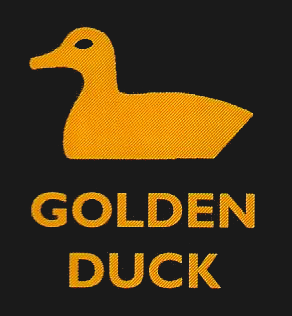1867 Born in Kennington, South London, the second of eight sons of James William Allingham (then a printer) and his wife, Louisa.
1874 Allingham’s grandfather, William Allingham, died. Allingham’s father, James William, used his legacy to found The Christian Globe, a non-denominational penny weekly much devoted to patent medicine advertising.
1879 Allingham’s uncle, John, (better known to posterity as ‘Ralph Rollington’) founded The Boys’ World, a penny story paper for the lower end of the boys’ market.
1880s Allingham may have been educated at home. Aged 15 he went to Cambridge University as a non-collegiate student.
1880s James Allingham disengaged himself from active involvement in The Christian Globe to found an advertising agency (J.C. Francis) which supported him until his death in 1920.
1886 John Allingham’s (Ralph Rollington’s) business ventures became increasingly precarious and he was finally forced to relinquish The Boys’ World to his creditors. He launched another penny weekly, The New Boys’ Paper, in which he published Barrington’s Fag, a “true tale of school life” by ‘Herbert St Clair’ – Herbert Allingham.
1889 Allingham finally achieved his BA degree and became editor of The London Journal.
1893 Allingham published A Devil of a Woman in The London Journal.
1902 Allingham married his first cousin, Emily Jane Hughes, a milliner from a broken home. Their first child, Margery, was born in 1904. Allingham achieved some success as ‘David Pitt’, writing boys’ adventure serials for True Blue, a penny weekly intended for the lower end of the Empire market.
1906 True Blue failed. Fortunately Allingham’s comic talent was recognised by a key Amalgamated Press editor (H.J. Garrish) and he began writing for Puck, The Jester, Comic Cuts, Chips and crucially The Butterfly.
1909 Readers’ enjoyment of Allingham’s contrasting serials, Plucky Polly Perkins and Driven from Home, sent The Butterfly’s sales figures soaring. This allowed him to resign from The London Journal (which ceased publication soon afterwards) and move his family out of London to The Old Rectory in Layer Breton. From this time until the mid years of WW1 he was hugely productive. His regular editor was F.C. Cordwell, a major influence in the development of British comic papers. Whenever Cordwell established a new title, he used Allingham (anonymously) as the lead writer and main attraction. Readers could enjoy Allingham’s fiction on at least four days of every week.
1914 Popularity of Allingham’s Mother Love serial earned him commissions from women’s magazines such as The Happy Home and My Weekly, published by John Leng of Dundee (later merged with D.C. Thomson).
1916 F.C. Cordwell joined up, paper was rationed and casualties decimated the young readers of the comics. Fortunately Allingham had persuaded his sister-in-law, Maud Hughes, to become an Amalgamated Press assistant editor. She and ‘Biddy’ Johnson began re-invigorating Woman’s Weekly and both Herbert and his wife, Em, found work there, often under shared pseudonyms.
1918 Financial hardship forced Allingham to lease out thirteen of his most successful titles which were then anonymously syndicated across the John Leng / DC Thomson regional papers.
1919 F.C Cordwell returned to the Amalgamated Press and promptly founded a new comic with Allingham once again as lead author. Maud Hughes left Woman’s Weekly and founded The Picture Show, Britain’s first film fan magazine.
1920 Cordwell re-launched his comic-and-story papers to recognise the growing allure of film. Allingham’s pre-war serials were reprinted in The Kinema Comic and Film Fun under the names of ‘Fatty Arbuckle’ ‘Harry Houdini’ ‘Harold Lloyd’ and ‘Sessue Hayakawa’.
1926 The Amalgamated Press was sold to the Berry Brothers (later Lords Camrose and Kemsley). Allingham’s rates of pay were slashed and his work on the comics dried up as adolescent tastes changed and competition from the D.C. Thomson ‘Big Five’ began to intensify.
1930s Throughout his working life Allingham’s most characteristic and congenial writing had been produced for a mixed-age, mixed-gender readership. As magazine marketing became more sophisticated, this audience had fragmented, with each individual encouraged to buy their own niche paper instead of sharing a single all-purpose publication. The hard times of the early 1930s unexpectedly reversed this trend – for Allingham at least. He became the lead fiction-writer on two big-selling Amalgamated Press publications, The Family Journal and The Home Companion. Many of his pre-war serials were hastily revised and re-issued and the editor (Anne St John Cooper) took as much new work as he was able to produce. Anonymity was essential to disguise the fact that Allingham’s stories were running one after another without a break, sometimes two or three at a time, for the next six years.
1932 For the first time in his life Allingham was able to get a building society mortgage and own his home, a small house at Thorpe Bay in Essex.
1935 Allingham fell ill and could work no longer. He was forced to apply once again to the Amalgamated Press for a loan, pledging further reprint rights.
1936 Allingham died but none of the papers for whom he wrote acknowledged that fact. His stories ran on into the autumn of 1937 when his debt to the Amalgamated Press had been fully repaid. Then they stopped


